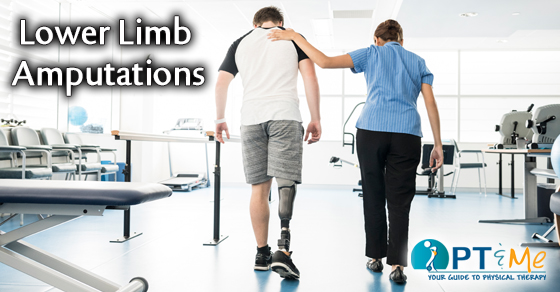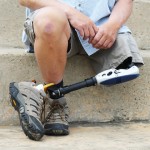The goal for every patient with a lower limb amputation is to walk normally again.
A patient with a lower limb amputation faces many challenges when it comes to walking safely in a variety of walking surfaces and without exerting excessive energy. Generally, the higher the amputation level, the more we can expect to see gait deviations or difficulty walking. This is because with each segment of the anatomy is lost to amputation, more muscle, sensory receptors and leverage are also lost. A Physical Therapy treatment program can be designed to assist a patient return to a “normal” walking pattern in terms of posture, step length, stability, balance, rate of speed, and limb positioning.
GAIT TRAINING
Almost all patients with a lower limb amputation will benefit from physical therapy and gait training at some point in their recovery to help them return to a more normal walking pattern. Pre-amputation exercises will assist the patient in arm and leg strengthening to help them prepare for using a walker during gait training with their prosthesis. After amputation surgery a prosthetist will work with the patient to fabricate and align a prosthesis to assure that it will optimize the patients walking pattern.
WHAT TO EXPECT DURING PHYSICAL THERAPY
-
The physical therapist will typically work with the patient 3 days per week
-
The physical therapist and prosthetest will remain in close communication with gait training is occurring since any changes in the prosthesis will affect the gait pattern
-
Initially physical therapy is focused on standing and walking with enough stability to ensure safety (this initial gait training is performed in parallel bars with the assistance of the physical therapist holding the patient with a gait belt for additional safety)
-
Initial gait training is supplemented with strength and flexibility exercises for the legs and trunk muscles since strong trunk and leg muscles make it easier to progress the patient’s gait training
-
The physical therapist will also work with the patient to improve balance and coordination to help the patient develop a more normal step length and walking speed
Physical therapists use many different techniques during gait training sessions
LEARNING HOW TO WALK AGAIN
Specialized Treatment Techniques
- SPLINTER SKILLS: Technique where the walking pattern is broken down into a sequence of events that are practiced individually before putting them all together to build the walking pattern
- WHOLE WALKING: Technique in which the entire gait pattern is performed all at one time without thinking about the individual components of walking therefore relying on the body’s natural tendency to find the most stable and energy efficient way to walk
BUILDING CONFIDENCE
Once the patient feels confident and the physical therapist believes that it is safe, a walker can be used instead of the parallel bars. When using a walker, the focus will change to helping the patient walk on uneven surfaces such as outdoors and walking around obstacles or stepping up and down stairs.
Even patients who have walked with a prosthesis for years can benefit from gait training for a “tune up” of their walking skills or to learn a new skill such as side stepping, tandem walking or even running.


